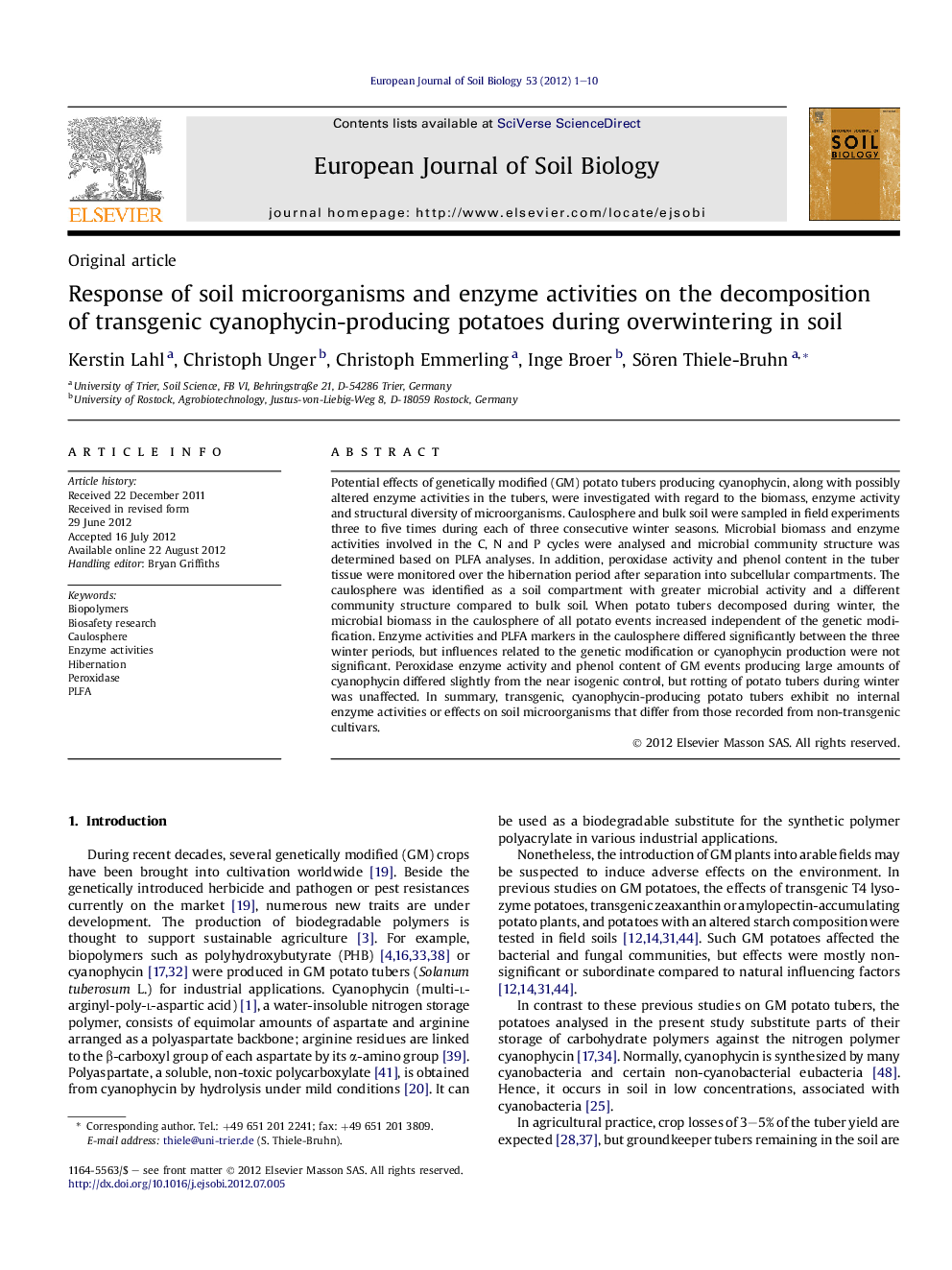| Article ID | Journal | Published Year | Pages | File Type |
|---|---|---|---|---|
| 4391981 | European Journal of Soil Biology | 2012 | 10 Pages |
Potential effects of genetically modified (GM) potato tubers producing cyanophycin, along with possibly altered enzyme activities in the tubers, were investigated with regard to the biomass, enzyme activity and structural diversity of microorganisms. Caulosphere and bulk soil were sampled in field experiments three to five times during each of three consecutive winter seasons. Microbial biomass and enzyme activities involved in the C, N and P cycles were analysed and microbial community structure was determined based on PLFA analyses. In addition, peroxidase activity and phenol content in the tuber tissue were monitored over the hibernation period after separation into subcellular compartments. The caulosphere was identified as a soil compartment with greater microbial activity and a different community structure compared to bulk soil. When potato tubers decomposed during winter, the microbial biomass in the caulosphere of all potato events increased independent of the genetic modification. Enzyme activities and PLFA markers in the caulosphere differed significantly between the three winter periods, but influences related to the genetic modification or cyanophycin production were not significant. Peroxidase enzyme activity and phenol content of GM events producing large amounts of cyanophycin differed slightly from the near isogenic control, but rotting of potato tubers during winter was unaffected. In summary, transgenic, cyanophycin-producing potato tubers exhibit no internal enzyme activities or effects on soil microorganisms that differ from those recorded from non-transgenic cultivars.
► Overwintering of cyanophycin producing GM potato tubers in soil was investigated. ► The caulosphere of potato tubers is a soil compartment, differing to bulk soil. ► Microbial measures in the caulosphere of GM and wild-type potatoes were compared. ► Effects of GM potatoes on enzyme activities and PLFA markers were insignificant. ► Internal enzyme activities of GM potatoes were in the range of wild-type controls.
